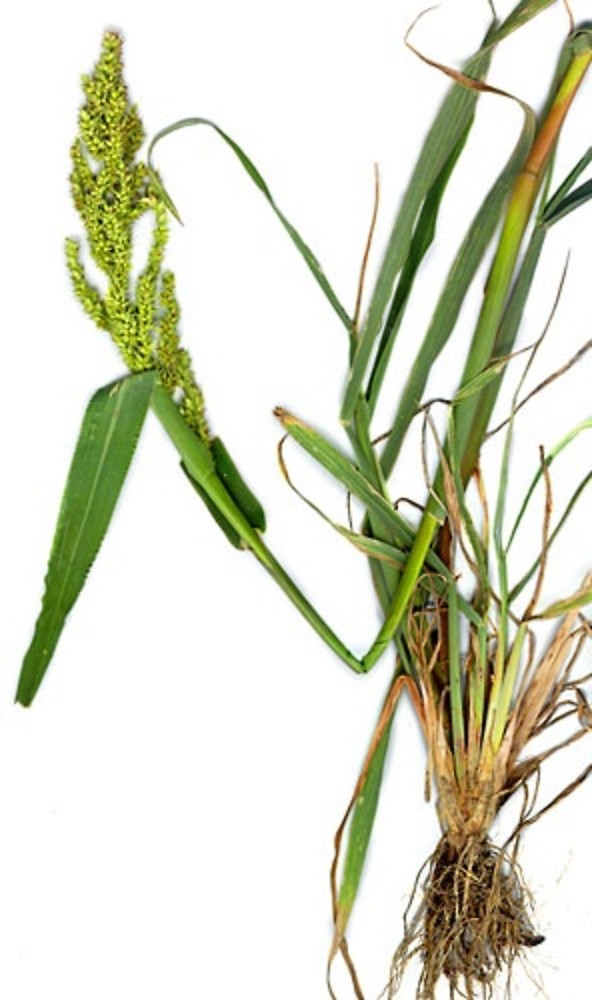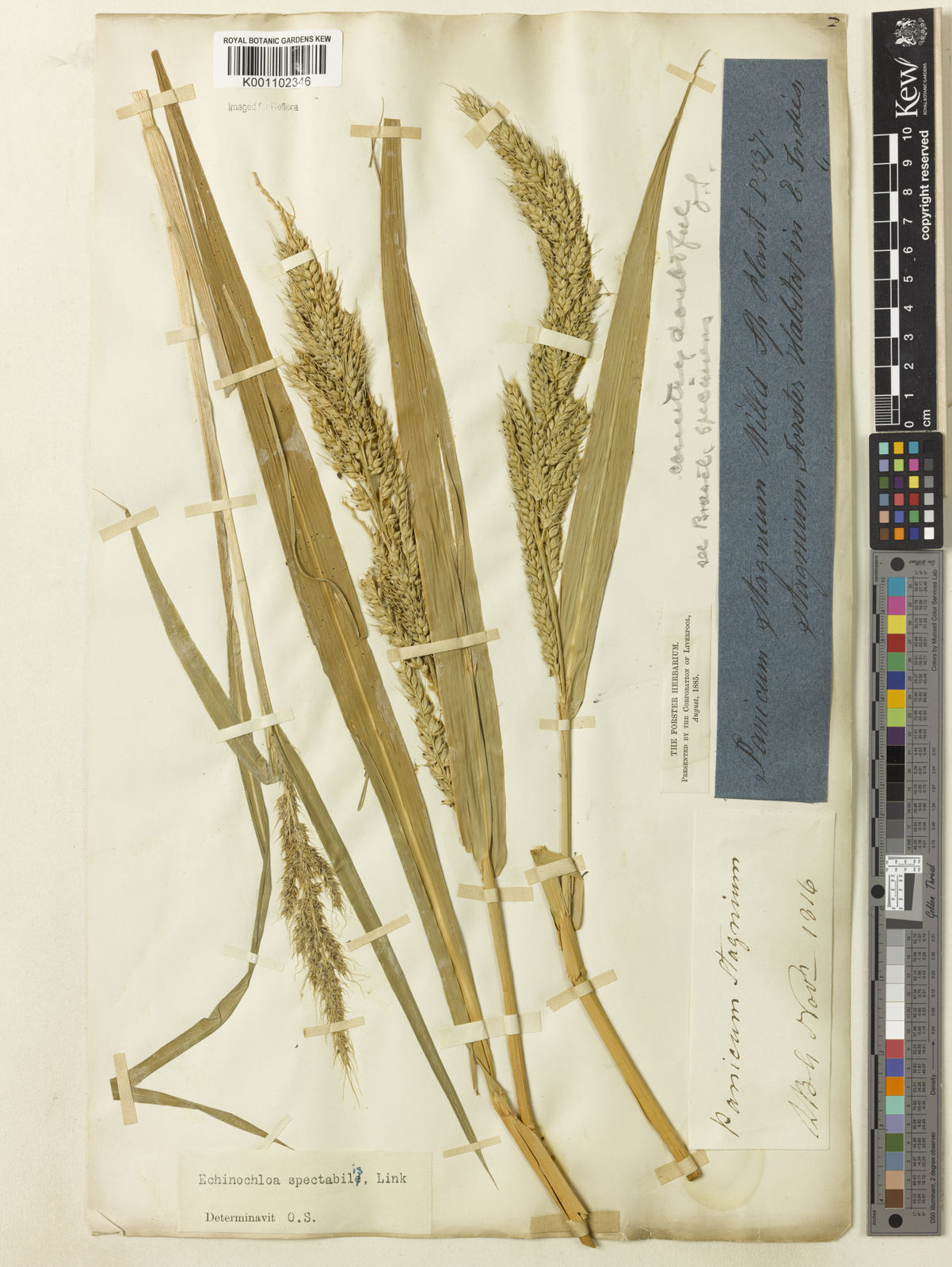Echinochloa: The Weed That's Not So Weedy
Echinochloa: The Weed That's Not So Weedy
Echinochloa is a genus of annual and perennial grasses that includes over 100 species. These grasses are found in tropical and temperate regions around the world, and they can be a major problem for farmers and gardeners. However, not all echinochloa species are weeds. Some, such as barnyard millet and Japanese barnyard millet, are actually cultivated crops.
In this blog post, we will take a closer look at echinochloa weeds. We will discuss their biology, their impact on agriculture, and some of the methods that can be used to control them.
Biology of Echinochloa Weeds
Echinochloa weeds are typically tall, fast-growing grasses with broad leaves. They can produce a large number of seeds, which can remain viable in the soil for many years. This makes them difficult to control, as even a small number of seeds can quickly lead to a new infestation.
Different echinochloa species have different growth habits. Some, such as barnyard millet, are annuals that complete their life cycle in one year. Others, such as red rice, are perennials that can survive for multiple years.
Echinochloa weeds are often found in disturbed areas, such as roadsides, fields, and gardens. They can also be found in flooded areas, such as rice paddies.
Impact of Echinochloa Weeds on Agriculture
Echinochloa weeds can have a significant impact on agricultural productivity. They can compete with crops for water, nutrients, and sunlight. They can also harbor pests and diseases.
In rice paddies, echinochloa weeds can reduce yields by up to 50%. They can also make it difficult to harvest the rice, as the weeds can clog harvesting machinery.
Echinochloa weeds can also be a problem in other crops, such as corn, soybeans, and wheat. They can reduce yields and make it difficult to harvest the crops.
Controlling Echinochloa Weeds
There are a number of methods that can be used to control echinochloa weeds. Some of the most common methods include:
- Cultural control: This involves practices such as crop rotation, deep tillage, and flooding. These practices can help to disrupt the life cycle of the weeds and make it more difficult for them to survive.
- Chemical control: Herbicides can be used to kill echinochloa weeds. However, it is important to use herbicides that are specifically labeled for use on echinochloa weeds.
- Biological control: Biological control agents, such as insects and diseases, can be used to control echinochloa weeds. However, biological control agents can be slow to work, and they may not be effective in all situations.
The best method for controlling echinochloa weeds will vary depending on the specific situation. In some cases, a combination of methods may be necessary.
Conclusion
Echinochloa weeds can be a major problem for farmers and gardeners. However, there are a number of methods that can be used to control them. By using a combination of cultural, chemical, and biological control methods, it is possible to keep echinochloa weeds in check and protect agricultural yields.
Echinochloa is a genus of grasses that includes many species that are known as barnyard grass or cockspur grass. These grasses are found all over the world and can be either annual or perennial. They are often used as forage for livestock, but some species can also be invasive weeds.
If you are interested in learning more about echinochloa, I recommend visiting the website Garden Wiki. This website contains a wealth of information about the genus, including its taxonomy, distribution, ecology, and uses. You can also find photos, illustrations, and videos of echinochloa species.
The website is easy to navigate and the information is presented in a clear and concise way. Whether you are a student, a researcher, or simply a curious gardener, you are sure to find something of interest on this website.
FAQ of echinochloa
- What is Echinochloa?
- Echinochloa is a genus of annual and perennial grasses that are found in tropical and temperate regions around the world. There are over 200 species of Echinochloa, but some of the most common ones include barnyard millet, jungle rice, and Japanese barnyard grass.
- What are the uses of Echinochloa?
- Echinochloa has a variety of uses, including:
- Forage for livestock
- Food for humans
- Weed control
- Reclamation of saline soils
- Biofuel production
- Echinochloa has a variety of uses, including:
- What are the challenges of managing Echinochloa?
- Echinochloa can be a serious weed in agricultural fields, as it is a fast-growing and competitive plant. It can also produce a large number of seeds, which can make it difficult to control.
- How can Echinochloa be controlled?
- There are a number of ways to control Echinochloa, including:
- Cultural practices, such as crop rotation and timely planting
- Mechanical control, such as mowing or hand weeding
- Chemical control, using herbicides
- There are a number of ways to control Echinochloa, including:
- What are the risks of Echinochloa?
- Echinochloa can pose a number of risks, including:
- Reduced crop yields Increased weed infestations Soil erosion Health problems for livestock and humans
- Echinochloa can pose a number of risks, including:
Image of echinochloa
- Echinochloa colona, also known as jungle rice, is a common weed in rice fields. It has long, slender leaves and produces small, black seeds.

- Echinochloa crus-galli, also known as barnyard grass, is another common weed that can be found in a variety of habitats. It has short, broad leaves and produces small, white seeds.

- Echinochloa muricata, also known as thorny panicum, is a tall, coarse grass that can grow up to 6 feet tall. It has sharp spines on its stems and leaves.

- Echinochloa phyllopogon, also known as hairy panicum, is a slender grass with hairy stems and leaves. It produces small, black seeds.

- Echinochloa polystachya, also known as giant millet, is a tall, coarse grass that can grow up to 10 feet tall. It produces large, puffy seeds that are used as a food crop in some parts of the world.

Post a Comment for "Echinochloa: The Weed That's Not So Weedy"